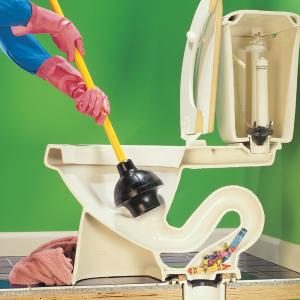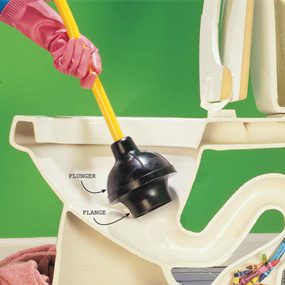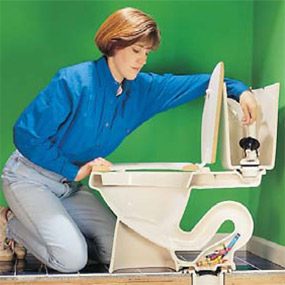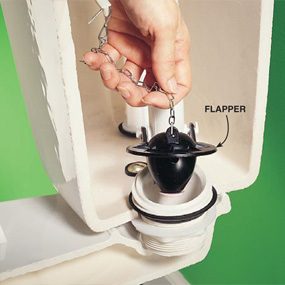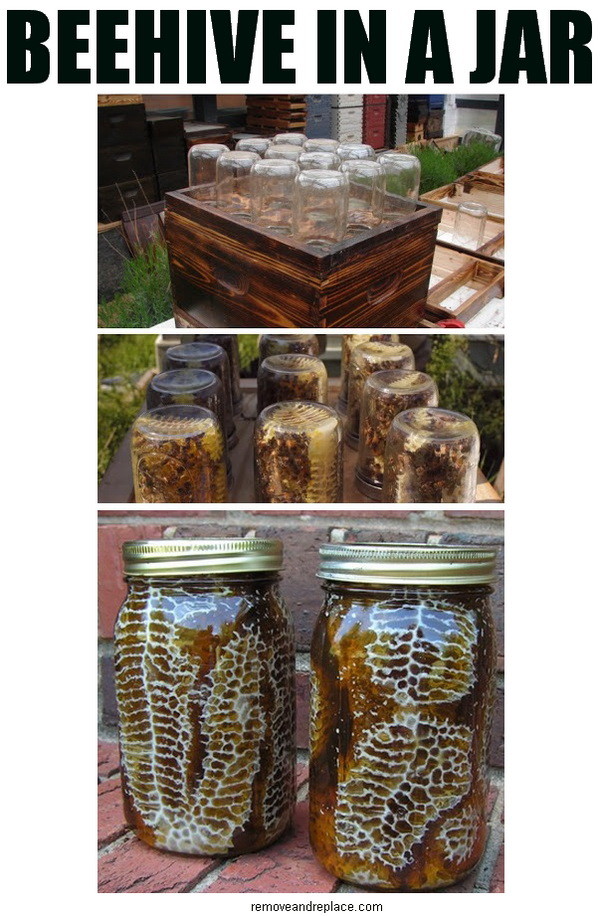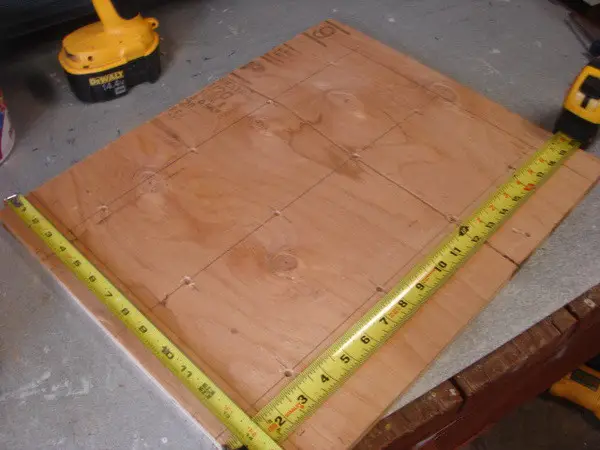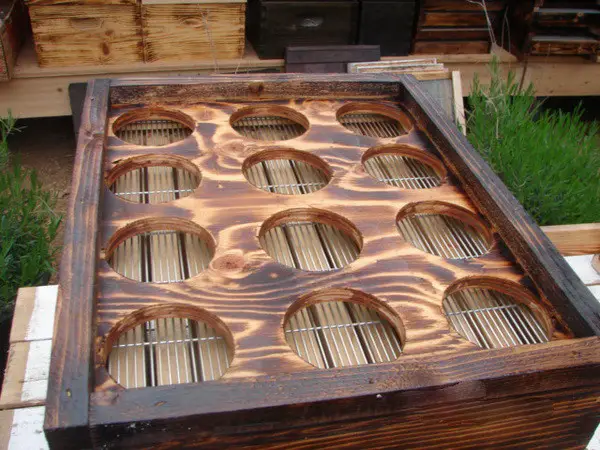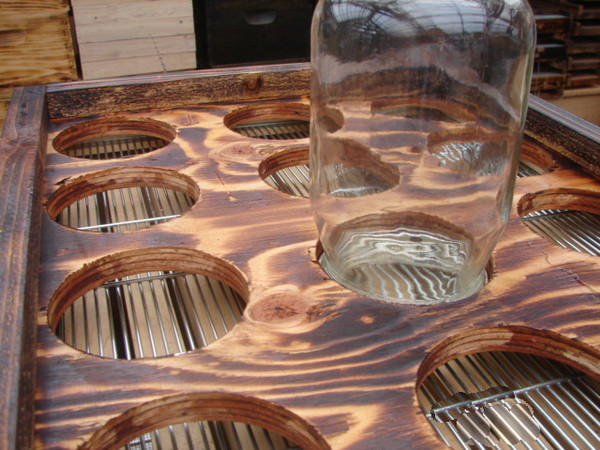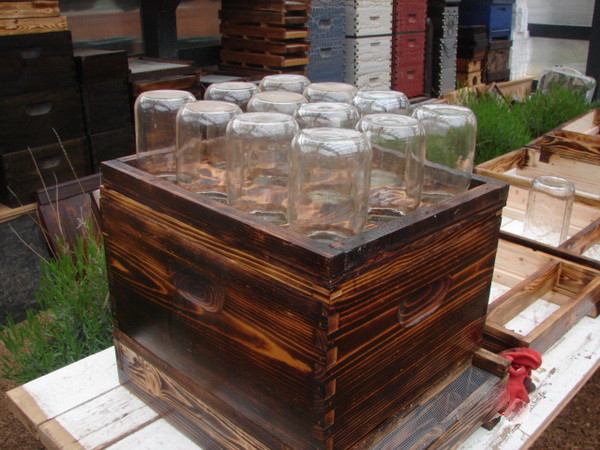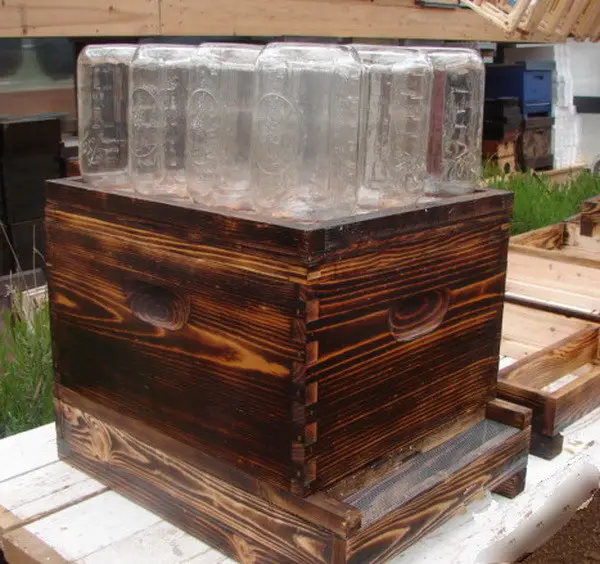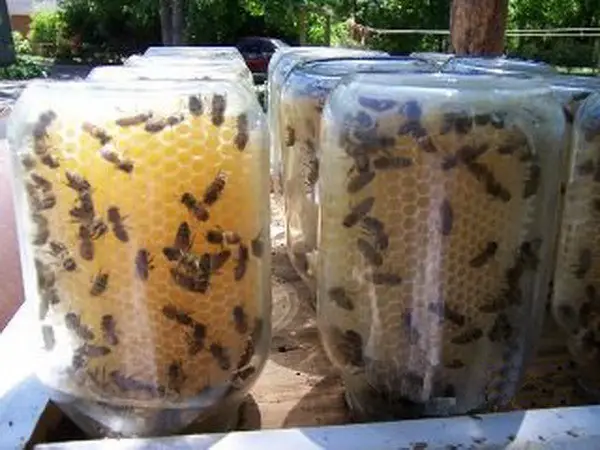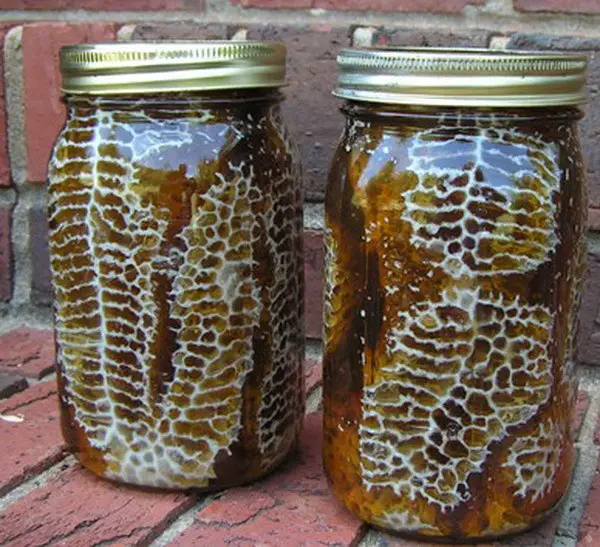This DIY is brought to you by: Positively Splendid
Let me show you how I did it!

Here’s what else you will need!
1. Clean the can. If you haven’t yet, empty the can of its soup
or other contents (go ahead….go eat your soup…I’ll be here when you’re
ready to get started!) Remove the label off your can by cutting a nice
neat line down the side with a scissors, and set the label aside (you’ll
see why in a bit). CAREFULLY wash out your can with soap and warm water
(I say “carefully” because that inner edge is SHARP! Don’t worry, we’ll
take care of that scary edge in a bit! For now, just be careful.)

2. Cut two fabric strips. You will need two strips of fabric for
this project: one wider, one thinner, both the same length. I don’t have
exact measurements for you…here’s why!

One of the reasons I chose this fabric was that I
wanted to use the alternating medallions on each of my cans. One can has
the light blue medallions, while the other has dark blue (isn’t this
fabric gorgeous?!?)

You may certainly measure your can and cut a fabric strip using a rotary
cutter or scissors if you’d prefer, but I found it pretty quick and
easy just to use my can label as a pattern! And since I wanted to fussy
cut my fabric, this method helped me center my cutting just right.

When cutting your fabric strip for the outside of the can, cut it just
wide enough for your can but add an extra inch or two in length for
overlap around the circumference. My skinnier strip (shown above) is
about 1.5″ thick and the same length as the wider strip.

3. Drill (or hammer) a hole into the bottom of the can. Flip your
can over so that the base is facing you. Using a drill with a 1/4″ bit
or a 1/4″ nail and hammer, put a hole in the bottom of your can.

4. Glue fabric to the outside of the can. Having worked with it
in the past, I really wanted to use Outdoor Mod Podge for this project.
Wouldn’t you know that EVERY craft store in my area is out of the stuff
(and you know I checked them all!). What I did find was this cute little
variety pack. It had just enough regular Mod Podge and Outdoor Mod
Podge for this project (and now I can try the other kinds of Mod Podge
that I’ve never had a reason to buy!)

Attaching your fabric to the outside of the can is pretty easy!
- (a) Cover the outside of the can in Mod Podge (you can use the regular or the Outdoor stuff for this step!)
- (b) Slowly wrap your fabric around the can, smoothing air bubbles as you go.
- (c) When you get back around, trim your fabric so you have a 1/2″ overlap and secure the end with more Mod Podge.

5. Prepare the skinny fabric strip. To take care of that scary edge on the inside top of the can, we are going to cover it with the smaller fabric strip.
- (a) Brush Mod Podge along the entire back of the skinnier fabric strip.
- (b) Fold in half (wrong sides together) and press flat.
- (c) Snip small slits about every 1/2″ or so (this is because we didn’t cut our fabric on the bias. If you want to cut your fabric on the bias or use bias tape, then no snipping is required!)

6. Glue fabric to the top inside rim of the can. This is probably the trickiest part of the whole project! First, cover the top inside rim of your can with more Mod Podge.

Then working slowly (and patiently), press your fabric strip along the
inside of the rim. You may need to go around a couple times to really
get it to stick… (Note – in a moment of frustration, I almost pulled
out my glue gun. If you can’t get yours to stick just right…I suggest
you use a glue gun or something that has quick drying power!)

But once you do, you will have a pretty (and safe) inside rim!

7. Seal the fabric strips with Outdoor Mod Podge. Here is where
you really want to use the Outdoor Mod Podge (if you can find it!) or
some other weather-proof sealer! Using a sponge, cover both the outer
and inner fabric strips with (at least) two coats of the protective
finish. Let dry.

So pretty and shiny!

These would make great pencil cups too!

I digress…onward!
8. Assemble all hardware pieces. Once
your can is dry to the touch, you can go ahead and assemble the whole
thing! Here’s a quick snapshot of the hardware you are looking for when
you’re at the hardware store!

And here’s how it goes together!
- (a) Twist one bolt about 4″ down the threaded rod.
- (b) Place one washer on top of the bolt.
- (c) Place the can (bottom side down – that’s what the hole was for!) on top of the washer.
- (d) Place the other washer and the other bolt on top of the threaded rod.

It is best to make sure the top bolt and washer are flush with the top of the rod. Here is what I mean:

(e) Then flip your can over and tighten the original bolt and washer
toward the can. You should end up like this: bolt > washer >
bottom of can < washer < bolt.

But wait! Before you tighten everything up!!
9. Glue outside washer with Gorilla Glue. Following
manufacture’s instructions, put a little bit of water and then Gorilla
Glue just under the flat washer on the OUTSIDE of the can. Then twist
the bolt and make it as tight as you can!

10. Let glue dry. Let the glue dry for about an hour or so before proceeding by placing the cans on their tops.

11. Cover inside bolt and washer with resin. The last step is to pour resin inside the bottom of the can.

You can certainly skip this step if you’d like, but I wanted to smooth
out the uneven surface on the inside of the can created by the washer
and bolt. See what I mean?

The EnviroTex Lite is pretty easy to use, and I was able to mix just
enough for this project! AND I was really pleased that it didn’t have a
strong odor (so we could bring it in over night to dry!).
To pour it in:
- (a) I stood my two drink holders up in a pot filled with sand and made sure they were as level as I could get them!
- (b) I mixed the resin according to package directions and poured it in the bottoms of the cups…just high enough to cover the washer and bolt.

It takes about 5-6 hours to set and then 48 hours until you can put a
drink in your can. See? Nice, pretty, smooth bottom! And it really helps
to make the whole thing much sturdier!

Now you’re ready to drive your rod into the ground or sand near a comfy seat…insert a beverage, and relax! (NOTE
– depending on the soil/sod in your yard, it might be tough to get it
in the ground! If it hasn’t rained in a while or if you have really
tightly packed soil, drive a garden stake or nail into the ground first,
and then put your drink holder in!)

All ready to sit back and relax!
Cheers!














